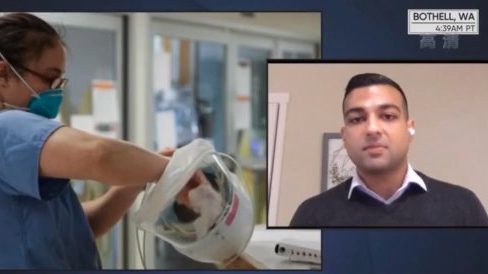With the increasing number of new confirmed cases and hospitalizations of COVID-19 in the United States, intensive care beds have recently appeared in many parts of the United States. The New York Times recently reported that more than one-third of Americans, in hospitals near their homes, have serious shortages of intensive care beds.
According to CNN, on the 9th, California’s new confirmed cases in a single day were 30,851, and the number of hospitalized cases reached nearly 12,000. Among the hospitalized cases, there were about 2,600 cases in intensive care. All three data set a record in the state. The number of intensive care beds across California has declined rapidly, and in some hospitals, intensive care beds are full.
In Los Angeles County, California, with severe epidemic, hospitalizations surged, with nearly 500 new hospitalizations in a single day on the 9th. Local health officials predict that the number of new hospitalizations in Los Angeles County in a single day may increase to 700 next week. On the 9th, the cumulative number of deaths in Los Angeles County reached 8,075, and the number of new deaths in a single day increased significantly compared with mid-November. Barbara Ferrell, director of the Los Angeles County Public Health Bureau, swallowed several times when talking about the increasing number of deaths.
Barbara Ferrer, Director of the Los Angeles County Public Health Bureau: The more terrible fact is that more than 8,000 people, sorry, more than 8,000 people have left forever. They were the dearest members of their families, and their death is an incalculable loss to friends, family members and our communities.
Texas also experienced the shortage of intensive care beds in hospitals. According to the Associated Press, Texas health officials said on the 9th that 10,930 new confirmed cases were reported in Texas that day, and the number of hospitalizations exceeded 9,000 for the second time this week, reaching 9,053. At present, the cumulative number of confirmed cases in Texas has exceeded 1.2 million, and the actual number of cases may be higher, because many people have not been tested for the novel coronavirus.
Experts say the recent spike in confirmed and hospitalizations is linked to the large number of Americans traveling on public holidays.
Justin Gill, Lecturer in Health Policy at the University of Washington Bethel: Some people don’t believe that there is a virus, and some people don’t believe that wearing masks is not important and still attend parties and large family activities.



